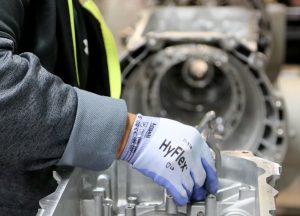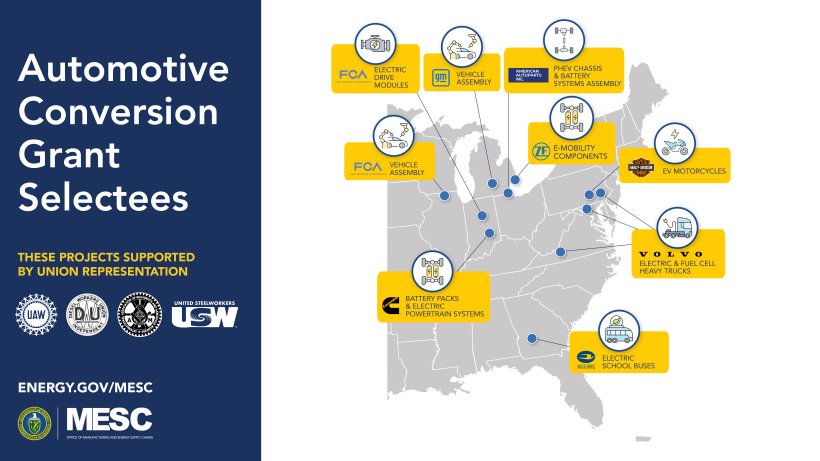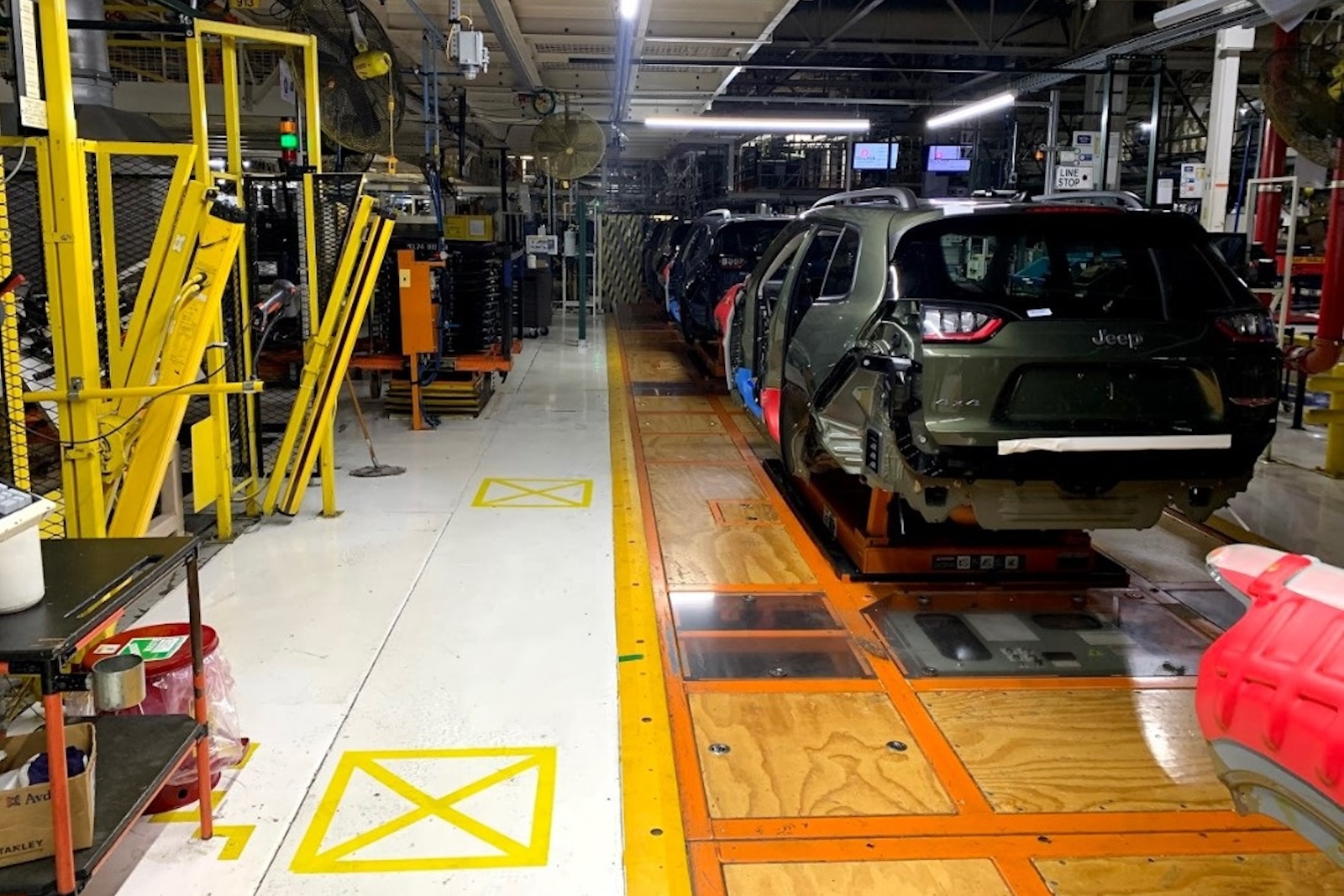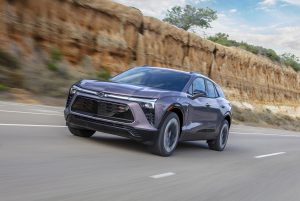Although EV sales aren’t going at breakneck speed these days, automakers are still churning out new models and planning for future models. To make that easier, the Biden administration awarded $1.1 billion in grants to General Motors and Stellantis to convert existing plants to build electric vehicles and components.

Stellantis received more than $584 million in grants to convert its Belvidere and Kokomo, above, plants for EV and component production.
The funding is part of a larger $1.7 billion grant from the U.S. Department of Energy support the conversion of 11 shuttered or at-risk auto manufacturing and assembly facilities to EV production and the supply chain in eight states — Michigan, Ohio, Pennsylvania, Georgia, Illinois, Indiana, Maryland and Virginia.
Formally the Domestic Manufacturing Auto Conversion Grants program, its designed to keep plants in the U.S. and, more important politically, jobs in America. The DOE claims the $1.7 billion could “create over 2,900 new high-quality jobs and help ensure over 15,000 highly skilled union workers are retained across all eleven facilities.” It’s funded by the Inflation Reduction Act passed in 2021.
“There is nothing harder to a manufacturing community than to lose jobs to foreign competition and a changing industry,” said U.S. Secretary of Energy Jennifer M. Granholm. “Even as our competitors invest heavily in electric vehicles, these grants ensure that our automotive industry stays competitive — and does it in the communities and with the workforce that have supported the auto industry for generations.”
Where’s the cash going
While the $1.7 billion granted now is going to a variety of companies ranging from Harley Davidson Inc. to Blue Bird Body Co. to Cummins Electrified Power NA Inc., the bulk of the money is headed to GM and Stellantis, or specifically Fiat-Chrysler Automotive U.S. LLC.

GM’s Lansing Grand River plant was the recipient of $500 million in funding to build electric vehicles.
GM is getting $500 million toward the conversion of its Lansing Grand River Plant to build electric vehicles. The Detroit-based automaker produces EVs in four other plants — Factory ZERO Detroit-Hamtramck Assembly Center and Orion Assembly in Michigan, Spring Hill Manufacturing in Tennessee, Fairfax Assembly in Kansas — as well as other EV-related components in other facilities.
Fiat-Chrysler’s plants in Kokomo, Indiana, which produces transmissions, and the Belvidere, Illinois facility received a combined $584.8 million to convert to production of electric drive modules and vehicle production, respectively. Stellantis offered no comment on the awards.
The current round of grant recipients applied last August for consideration. The program offers a total of $177 million in funding.
Meeting the future
GM moved quickly to claim a leadership position in conversion to electric vehicles, but has since slowed its charge into the all-electric realm. However, it continues development of its EV lineup with the new Blazer EV and Silverado EV recently hitting the road and the Equinox EV as well as next-generation Bolt EV expected in the months ahead.
It reported record EV sales during the second quarter of the year, laying claimed to 21,930 deliveries. That’s up 34% compared to its Q1 results and 40% on a year-over-year basis. The first half totals saw the company deliver 38,355 EVs, also a record. GM’s EV registrations were up 17% year-to-date compared to the industry average of 10%, officials noted.
Stellantis lags GM currently in EV sales, but its funding is aimed more at future product, which CEO Carlos Tavares claims will hit the road in the black — no loss leaders, if you will. Still of the EVs it does produce, they’re gaining traction.
However, it’s electrified lineup is industry leading. Jeep Wrangler 4xe, Jeep Grand Cherokee 4xe, Dodge Hornet R/T and Chrysler Pacifica Hybrid held their ranking as four of the top-five best-selling plug-in hybrids in the U.S., according to S&P Global Mobility’s U.S. State Registrations database through April 30.
Also it introduced its all-new, all-electric Grand Wagoneer S in June, which was preceded by the new Fiat 500e.





0 Comments